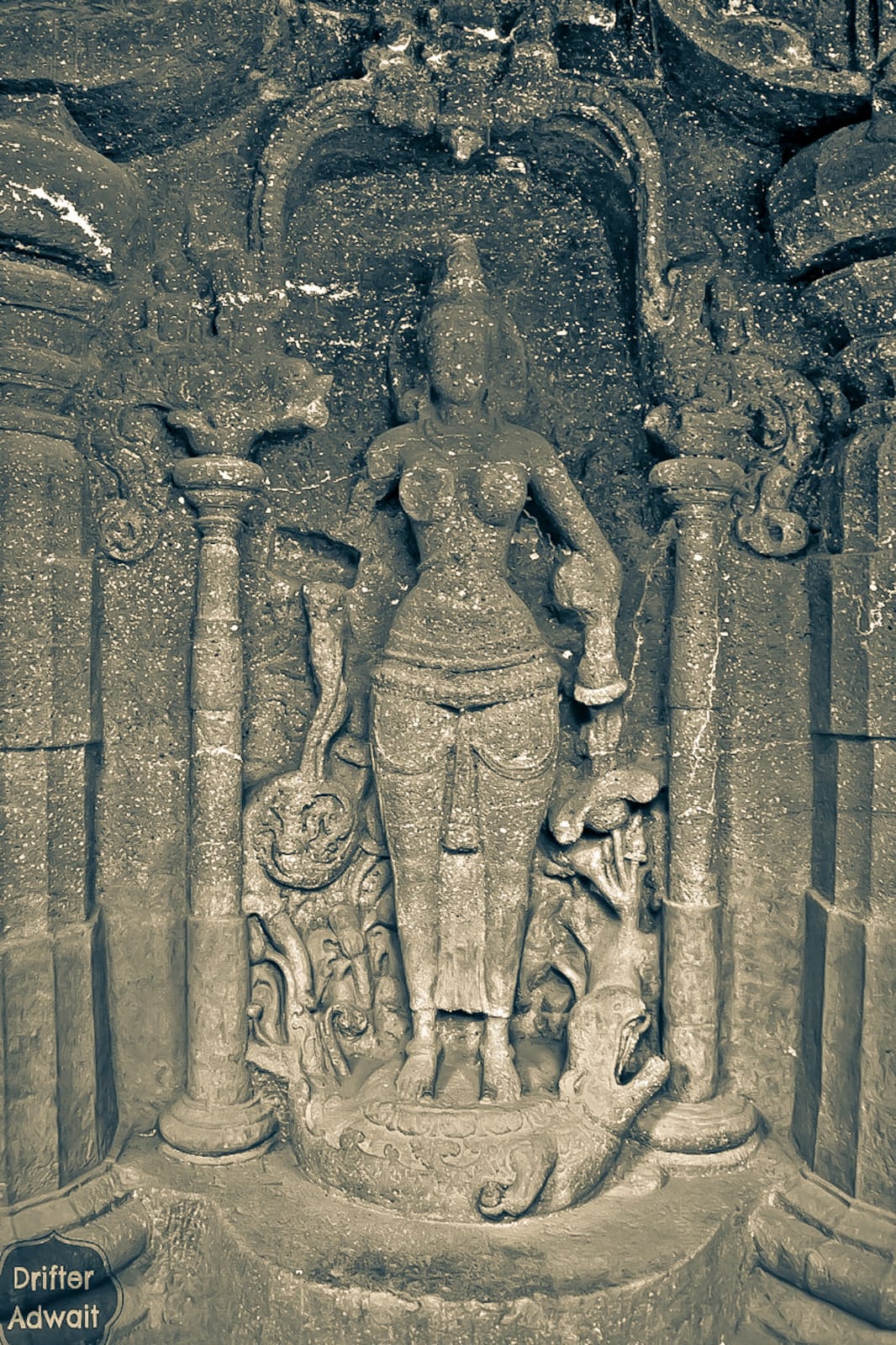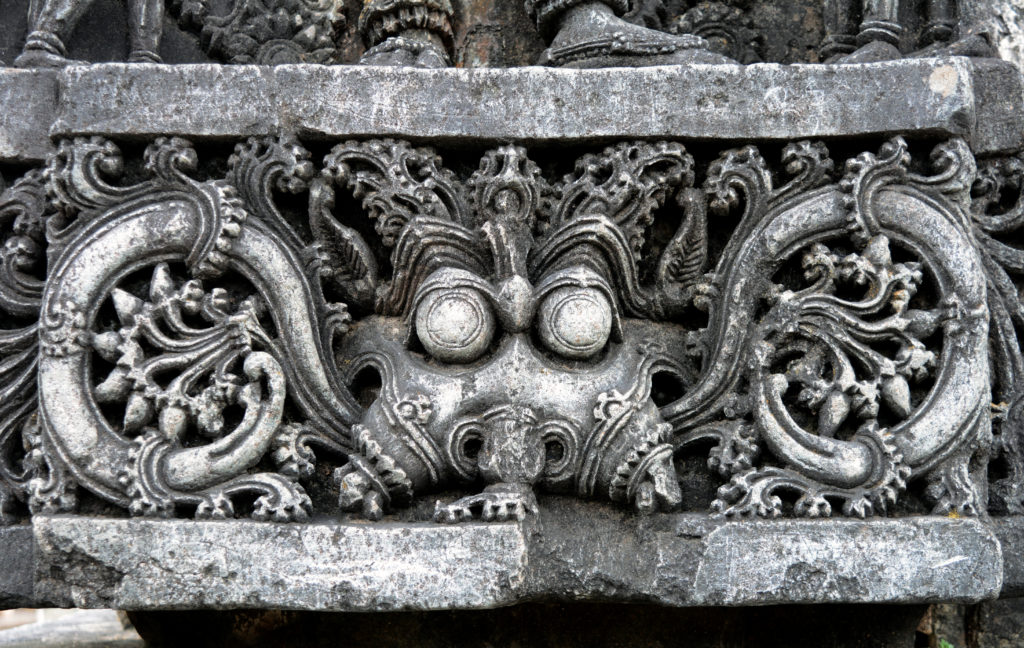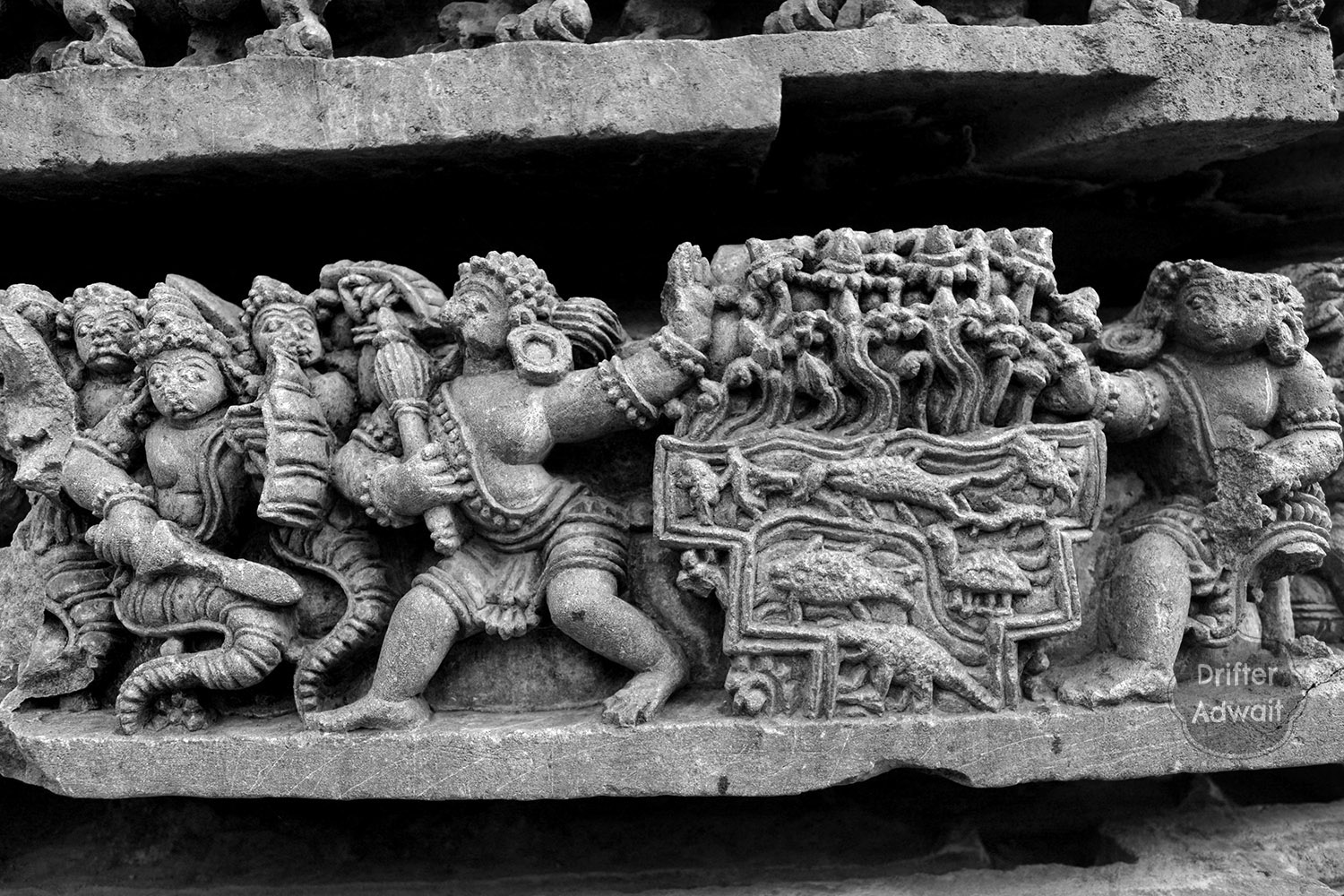Dive into the mythical world of Hinduism and explore the captivating tale of Gangavataran. This ancient story depicts the descent of the holy river Ganga from the heavens to the earth, as Lord Shiva receives her in his matted locks and releases her onto the land. With themes of sacrifice, forgiveness, and divine intervention, this fascinating tale offers a powerful lesson on the power of faith and the eternal bond between gods and mortals. Join us as we uncover the rich symbolism and spiritual meaning behind this timeless tale and discover its relevance to our lives today, explained with the help of ancient sculptures.
The Story of Gangavataran
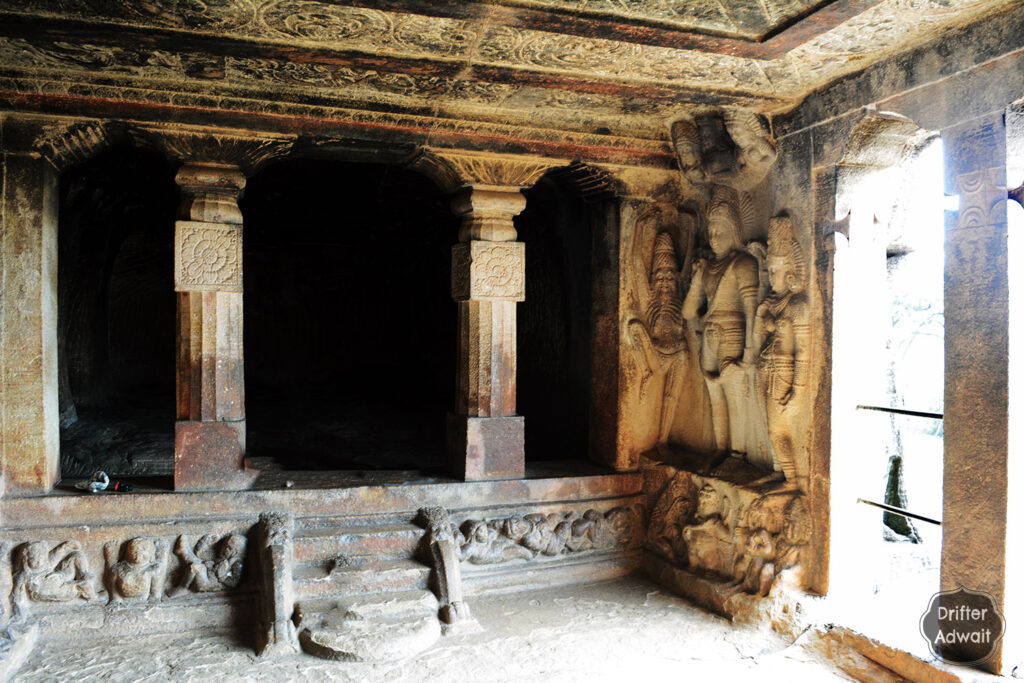
Ganga. Gangaji. Maa Ganga. The Ganges. No other river on face of the earth has been connected with humans spiritually and emotionally as much as Ganga. She is considered as the creator of one of the greatest, most ancient, yet the only surviving civilization on earth – Sanatana Dharma.
She is a life-giver, and cremation ceremonies performed on her banks ensure absolution. She is a goddess descended from the heavens for uplifting and for the salvation of the humans. In this blog, we are looking at the Ganga’s Descent, or Gangavataran, through the legendary sculptures found on the walls of ancient temples and caves.
Descent of the Ganga
So this is what happened. There was a race of Rakshasas named Kaleyas, who lived under the sea. They used to surface on earth, create havoc, and again, used to hide under the sea bed quickly. Like the Hindi movie police, Gods used to reach the crime scene very late, only to find death and destruction. This destabilized the delicate balance between good and evil on earth, tilting the scale of sins on the heavier side and empowering the dark forces. The Rakshasas, living under the sea, should have been stopped at any cost.
After much brainstorming, the Gods came up with a plan. The plan was simple indeed. All they needed was to drain the sea, find the demons, kill them all, destroy their hidden base and refill the sea. But, no one was equipped with such immense power other than the legendary sage Agastya Rishi. Gods approached the sage and explained the whole situation. In Teertha Yatra Parva of Mahabharata, Vyas Muni writes,
एतावदुक्त्वा वचनं मैत्रावरुणीरच्युत:। समुद्रमपिबत क्रुद्ध: सर्वलोकस्य पश्यत: ।।
And then, the angry son of Mitravarun, Agasti, who always stays within his limits, started drinking the seawater, and the entire world witnessed this miracle with awe.
After the great sage emptied the entire sea, Gods went after the Rakshasas, hidden beneath the deep-sea trenches. A war broke down between the armies of Gods and the Rakshasas. Gods decimated the demons in no time, and the rest ran away, hiding in the Patala.
After the war, Gods approached the sage Agastya, requesting him to refill the sea. Listening to the Gods and their King Indra, the great Agastya said, O’ dear Gods and King Indra, I have digested all that water. You must find another way to fill this giant hole on earth, where the sea used to be. Surprised and worried, Gods bowed down to that eccentric yet great sage and returned to heaven, thinking about how to restore the planet’s ecological balance. Little did they knew, that sage Agastya might have an idea of what was unfolding in the background.
Worrying about the ecological balance of earth, all the Gods and demigods went to Lord Brahma, and then, Lord Brahma assured those worried souls that after few thousand years, the sea shall be filled, yet again.
King Sagar of the Ikshwaku Clan
In Mahabharata, Yudhishthira asks sage Vaishampayan, how the Ikshwaku clan was responsible for refilling the sea? In answer to that, sage Vaishampayan narrates the story, which goes as follows…
There used to be a brave and righteous King named Sagar of the Ikshwaku clan. He had two wives named Vaidarbhi and Shaibya. Despite being healthy and beautiful, King did not have a progeny to carry his and his clan’s name forward. The Sagar, with his beautiful wives, went to Mount Kailasa and started penance for Mahadev. After a few years of hard austerities, Mahadev appeared before them. The King, along with his both queens, asked for the sons. Pleased with their devotion, Mahadev said,
षष्टी: पुत्रसहस्त्राणि शूरा: परमदर्पिता:। एकस्यां सम्भविष्यन्ती पत्न्यां नवरोत्तम।।
ते चैव सर्वे सहिता: क्षयं यास्यन्ती पार्थिव। एको वंशधर: शूर एकस्यां सम्भविष्यति।।
O’ King and Queens, your wishes shall be fulfilled. But the Muhurta (time) in which you have asked for this boon is tricky. Your one wife will be a mother to sixty thousand sons, but they all shall be killed at once. And your other wife shall give birth to only one son, who will carry name of the great Ikshwaku clan further.
Saying this, Bhagavan Mahadev disappeared. Hearing this boon, King and his queens came back to his Kingdom. And when the time came, queen Shaibya gave birth to a beautiful son who was as beutiful and healthy as the Gods. In another chamber of the palace, Vaidarbhi gave birth to one pumpkin. Astonished, King thought about throwing the pumpkin. As he was finishing this thought, skies roared with an announcement.
Akashwani (sky announcement) said, O’ king, this is happening as per the boon of Mahadev. Do not throw away the pumpkin and insult the supreme one. Instead, separate the seeds, keep each seed in a closed pot containing Ghee (clarified butter), and protect each and every one of these pots. King followed the procedure and kept each pot, keeping one woman for each pot for supervision and care. After a few days, sixty thousand babies were born from the jars filled with Ghee.
Sixty thousand Sons and Ashwamedh Yadnya
Born by the boon of Mahadev, these sixty thousand sons grew to be mighty, powerful, and able to fly. Soon, grown up with mighty powers, they started tormenting the residents of earth and heavens. Few years later, King Sagar decided to conduct Ashvamedh Yadnya. Yadnya was completed, and the horse was set free to roam on earth. Wherever it went, sixty thousand sons followed the horse, forcing the kingdoms to surrender or conquer the kings who refused to bend the knee. Many kingdoms were fallen down in front of sixty thousand sons of King Sagar.
After a while, the Ashwamedh horse reached the seashore. Despite being protected by sixty thousand mighty worriers, one night, it suddenly disappeared from the face of the earth. Seeing this, all sixty thousand of them started looking for that horse. After searching for years, one of them saw a trench, deep in the place where it used to be the sea. The trench went to Patala, and it was followed by these sixty thousand worriers. Angered and irritated, those sixty thousand sons started killing everyone who came across their path.
After creating the havoc and killing every Naaga, Rakshasa, and animal in hell, they reached the eastern side of the Patala, where they saw another gateway to earth. Going through that portal, they reached the Ashrama of sage Kapil. There, they saw the Yadnya horse tied near the sage’s hut. Shouting, cursing, and wielding their weapons, they ran towards the meditating sage at once. And then,
वासुदेवेति यं प्राहु: कपिलं मुनि पुंगवम। स चक्षुविकृतम कृत्वा तेजस्तेषु समुत्सॄजम।।
ददाह सुमहातेजा मन्दबुद्धीन स सागरान।।
Great sage Kapil, who was a form of Vasudev himself, opened his devastating eyes and threw his cataclysmic radiance on those sons of King Sagar, killing those idiots instantaneously.
A giant mountain of bones and ashes was created in front of the abode of Kapil. Meanwhile, Sagar had another son named Asamanjas (the one who lacked understanding) from queen Shaibya. Asamanjas was cruel in nature, and since childhood, he grew up tormenting children around him. After growing up, he had a son Anshuman who was righteous in the heart. Getting tired of Asamanjas’ cruelty, righteous King Sagar banished him out of the Kingdom.
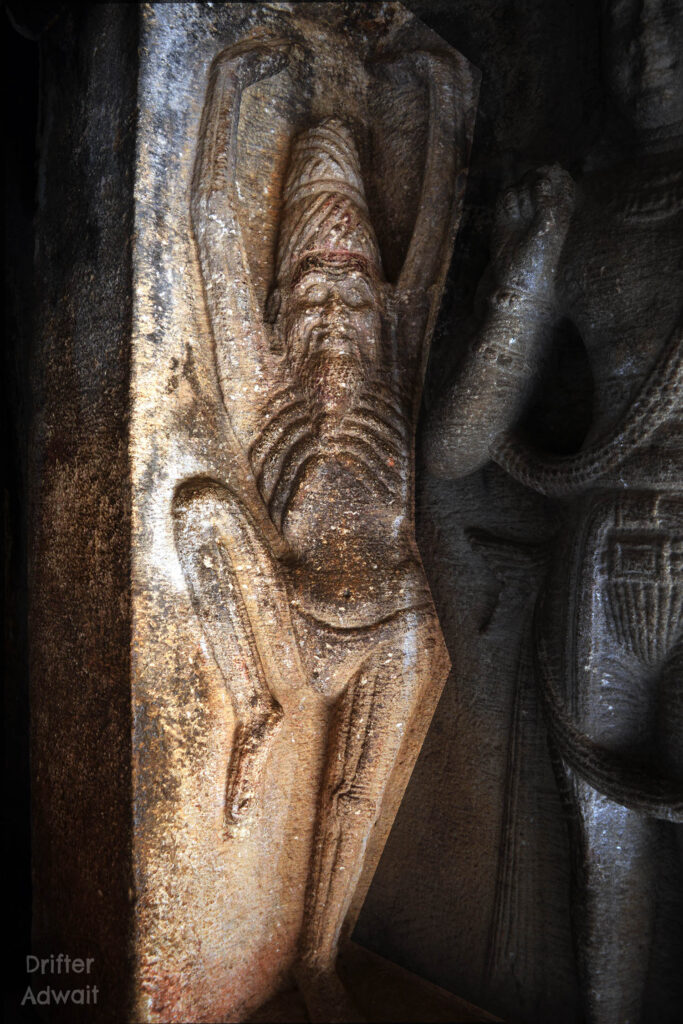
Narad Muni told Sagar what happened in the Ashram of sage Kapil. Hearing this, Anshuman went to sage Kapil and threw himself at the mercy of that Sadhu. Pleased with his politeness, the sage allowed Anshuman to take Ashwamedh’s horse along with him and blessed that his grandson would be able to salvage his sixty thousand ancestors by bringing down the holy Ganges on earth. Anshuman brought the horse back to his grandfather King Sagar. Finally, King Sagar successfully completing his Ashwamedh Yadnya.
After ruling for few more years, King Sagar went to Heaven, handing over the Kingdom to Anshuman. Anshuman was followed by his son King Dilip. When Dilip came to know about his ancestors, he was deeply saddened and started thinking about ways to bring the river Ganga from the heavens to the earth to free the stuck souls of his sixty thousand ancestors. King Dilip passed on his Kingdom to his son Bhagirath and went to Himalaya to do penance, to bring down Ganga. even after performing austerities for many years, he was unsuccessful. Bhagirath was a righteous king. When he heard about the history of his ancestors, like his father, he handed over his Kingdom to his ministers and disappeared into the tall mountains of the Himalayas to do a hard penance.
After performing the hard penance for thousand celestial years by praying to the Ganges and consuming just fruits and water, the holy Ganges finally appeared in front of him, pleased with his dedication. Bhagirath told her that has to come to earth, as no one else had that kind of power to wash away the sins of his ancestors and liberate them. Hearing his request, Divine Mother Ganga said,
करिष्यामि महाराज वचस्ते नात्र संशय:। वेगं तू मम् दुर्धार्यम पतन्त्या गगनाद भुवम।।
न शक्तस्त्रिषु लोकेषु कश्चिद धारायितुं नृप। अन्यत्र विवूधश्रेष्ठान्निलकंठान्महेश्वरात्।।
Maharaj, without a doubt, I will answer your prayers. Still, it’s nearly impossible to slow down my descent while falling from Heaven. O’ King, in these three worlds, only the greatest among the gods, Maheshwar Neelkanth, can sustain my juggernaut speed.
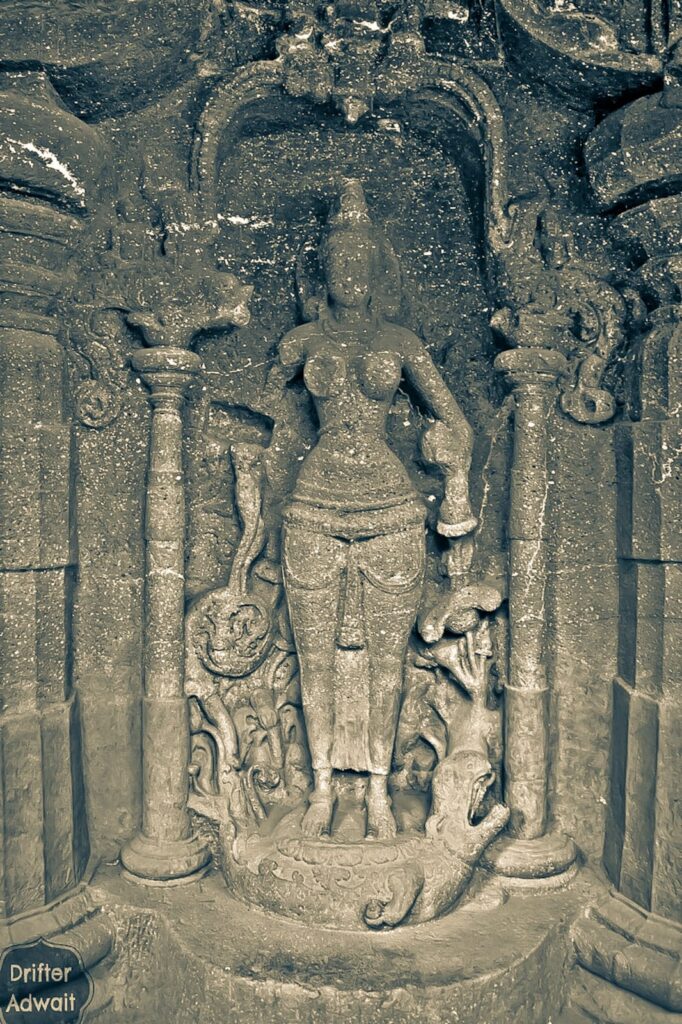
And then, King Bhagirath went to mount Kailasa to perform asceticism to please Mahadev. After doing rigorous asceticism for few years, Bholenath appeared in front of him and said, “O King, I will behold the Ganga on my head so that your ancestors will attain salvation”. Saying this, Mahadev came down to Himalaya, and Bhagirath prayed to Ganga.
Ganga appeared and started falling towards the earth with dangerous speed. Before it would hit the earth and destroy everything coming in front of her, Mahadev carried that mighty water on his head.
In Sarga 43, of Balakanda Ramayana, Maharshi Vishwamitra writes,
तस्यावलेपनं ज्ञात्वा क्रुद्धस्तु भगवान् हर:। तिरोभावयितुं बुद्धिं चक्रे त्रिनयनस्तदा।।
सा तस्मिन् पतिता पुण्या पुण्ये रुद्रस्य मूर्धनि। हिमवत्प्रतिमे राम जटामण्डलगह्वरे।।
(To protect the earth from her unbearable speed,) three-eyed Mahadev, aware of her pious intentions, applied his brilliance to conceal her. (O Rama,) the sacred Ganga descended and got lost in the depths of matted locks of the God. His holy head looked just like a tallest peak of Himalaya. Despite all the efforts of Bhagirath, being trapped in the endless locks of Mahadev, Ganga was not on earth.
Lost in matted locks of Bholenath Shiv, Ganga wandered there for many years. Not finding her, Bhagirath once again resorted to penance. Pleased immensely with his devotion, dedication and perseverance, Mahadev opened his locks and released the Ganga drop by drop.
तस्यां विसृज्यमानायां सप्तस्रोतांसि जज्ञिरे। ह्लादिनी पावनी चैव नलिनी च तथाऽपरा।
तिस्र: प्राचीं दिशं जग्मु: गङ्गाश्शिवजलाश्शुभा:।।
सुचक्षुश्चैव सीता च सिन्धुश्चैव महानदी। तिस्रस्त्वेता दिशं जग्मु: प्रतीचीं तु शुभोदका:।।
As she was released, she broke into seven streams. Three streams, namely Hladini, Pavani, and Nalini, flew eastwards, carrying prosperity with their auspicious waters, while auspicious Suchakshu, Sita, and a great river Sindhu flew westwards.
As the river started flowing from Himalayas,
समृद्धतमहावर्ता मीनग्राहं समाकुला।
तां दधार हरो राजन गंगा गगनमेखलाम।
ललाटदेशे पतितां मालां मुक्तामयीमिव।।
(When Ganga was descending from the heavens), giant waterspouts and mega waves were erupting from her. The water was filled with fish and other water creatures. Once, Ganga, which used to be an ornament of the heavens, was now ornating the forehead of Bhagavan Shiva, like celestial jewelry.
All the Gods living in the heavens descended down to the Himalayas to watch this extraordinary, and world changing event. Like a fickle girl, sometimes, Ganga appeared to dance like a twisted snake, colliding on the rocks of the Himalayas. Like a gorgeous woman covered in white clothes, she was engulfed in a white foam, dancing to the celestial tunes. Finally, she was on earth to wash away the ashes and bones of the sixty thousand sons of Sagar.
Seeing this, pleased Mahadev, carrying the extreme weight of Ganga on his head, left for the Kailas mountain. Riding the divine chariot, Bhagirath went ahead to show the path, and Ganga followed him with the roaring sound and at juggernaut speed. All the divinities gathered there to see this phenomenon. All the cosmic entities who were forced to live on earth as a curse were freed from their sins as they took a dip in the holy waters of Ganga. Being free from their sins, they ascended to the heavens once again.
As Ganga was following Bhagirath, riding his celestial chariot, she flowed with a wind-like speed. Unaware of her effects, she reached the Ashrama of great sage Janhu, flooding the entire area with her waters.
तस्यावलेपनं ज्ञात्वा क्रुद्धो यज्वा तु राघव। अपिबच्च जलं सर्वं गङ्गाया: परमाद्भुतम्।।
ततो देवास्सगन्धर्वा ऋषयश्च सुविस्मिता:।।
पूजयन्ति महात्मानं जह्नुं पुरुषसत्तमम्। गङ्गां चापि नयन्ति स्म दुहितृत्वे महात्मन:।।
(O descendent from the Raghu’s dynasty), Seeing this, the great sage was angered due to Ganga’s pride. He drank the entire water of Ganga with his ascetic powers. All the Devatas, Gandharvas, and sages were stunned by the act of Jahnu Rushi. They prayed to the great sage to treat Ganga as if she was his own daughter.
ततस्तुष्टो महातेजाश्श्रोत्राभ्यामसृजत् पुन:। तस्माज्जह्नुसुता गङ्गा प्रोच्यते जाह्नवीतिच।।
And then, pleased, Jahnu released the Ganga through his both ears. Since that moment, in three worlds, Ganga was known as the daughter of Jahnu, or, Janhavi.
Ganga came and washed away the giant mountain of sixty thousand sons of Sagar. They all achieved salvation, and ascended to heaven. As per the request of Bhagirath, after washing away the mountain of sixty thousand burnt corpses, Ganga filled the giant hole on the earth, refilling the sea, and restoring the ecological balance of the planet. Ramayana says,
गङ्गा त्रिपथगा राजन् दिव्या भागीरथीति च। त्रीन् पथो भावयन्तीति ततस्त्रिपथगा स्मृता।।
O Rama, since then, Ganga was also known as Bhagirathi and Tripathaga. Since she flows and purifies everything in the three worlds of Heaven, earth, and Patala, she was known as Tripathaga.
Moreover, Mahabharata syas,
पितृणां चोदकं तत्र ददौ पूर्णामनोरथ:। एतत ते सर्व माख्यातं गंगा त्रिपथगा यथा।।
And then, Bhagirath prayed for the salvation of his ancestors, and his ancestors attained Sadgati, thus fulfilling his intentions. (O’ Dear Yudhishthir,) This is how the Ganga was known as Tripathaga (flowing in all three worlds of Heaven, earth, and hell).
Across the Indian subcontinent, this story has been depicted on many temples. The first sculpture we are going to see is at the Rock-cut cave of Kailas, Ellora, Near Aurangabad, Maharashtra, India.
Sculpture 1: Gangadhar Shiva, Kailasa Temple, Ellora, Maharashtra.

You shall find this unique carving over the north staircase, taking you towards the Garbhagriha of the temple. In the upper left corner, you will see Bhagirath, standing on one toe, performing a hard penance. On his left, you will see a figure saluting Mahadev. If you look closely, this figure has four layers, perhaps, depicting the four generations or four kings of the Ikshwaku clan, Sagar, Asamanjas, Anshuman, and Dileepa, saluting the river Ganga and Mahadev, for liberating their sixty thousand ancestors.
In the middle, you can see Ganga, with folded hands, saluting Bholenath for carrying her on his head. Her tail-like lower body expresses the flow of the river rather splendidly. Four-handed Mahadev has opened one of his matted locks, significantly reducing the devastating speed of that mighty river. Bhagavan Mahadev is standing on an Apasmara Purusha, with divine mother Parvati on his left side. His lower left hand, adorned with the armlet of Kirtimukha, is caressing Parvati, patting on her head, reassuring her.
The lower left hand of Mahadev is resting on his lap. The way he is standing, the way he is holding his locks, and his face along with his entire posture reflects a relaxed state. Even after holding the weight of that unstoppable celestial flow on his head, he is standing there like nothing special has been done by him, and that reflects the true might of Mahadev.
From the locks of Gangadhar Bholenath, the river is falling into the hands of Rishi Janhu. He is drinking that water and releasing it from both of his years, giving the name Janhavi to the life-giving river. After being released by rishi Janhu, Ganga plummets on the mountains. If you look closely, you can see fishes and other creatures swimming in that water. Wild animals like elephants and horses have arrived to consume these celestial waters.
After hitting on the mountains, Ganga is split into seven different rivers. I think this has been shown here in the form of seven saluting women at the bottom of the sculpture. Bala Kanda of Ramayan says, “As she was released, she broke into seven streams. Three streams, namely Hladini, Pavani, and Nalini, flew eastwards, carrying prosperity with their auspicious waters. Auspicious Suchakshu, Sita, and a great river Sindhu flew westwards.” The seventh one is Ganga herself flowing in the southern direction, guided by Bhagirath.
Sculpture 2: Gangavataran, Ravanphadi Rock Cut Caves, Aihole, Karnataka
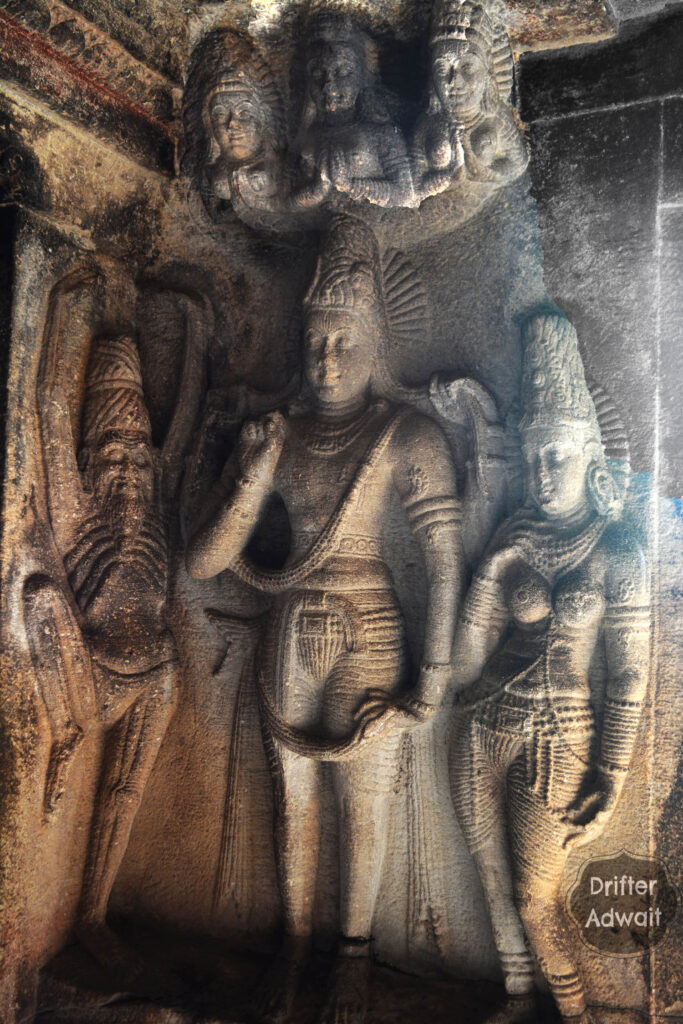
The same scene, with the same essence but with different aesthetics, has been carved out in a quiet cave of Ravanphadi. This incredible sculpture greets us on the left wall, adjecent to the door, as soon as we enter this monolith rock-cut cave, a brilliant example of developed Indian architecture. When you stand in front of this sculpture, larger-than-life celestials depict the story of Gangavataran.
As Ganga travels in Heaven, earth, and Patala, it is also known as Tripathagami. This phenomenon is depicted here splendidly by showing three identical women in Namaste pose, merging together to be one. This one Ganga, made from three streams representing each world, is held aloft on the head by Mahadev. He is wearing a crown made with matted locks and half-moon. The sculpture has sculpted the aura around his head, underlining the divinity of Chandramauleshwar.
Four-handed Shiva is standing in a relaxed pose. He releases the small portion of Ganga on earth by lifting and separating a couple of his dreadlocks in the air with his upper two hands. He has kept his front left hand on his thigh, holding his Uttariya, while holding something else in his right hand.
The third eye in between his bow-shaped eyebrows is closed, and the rest of his eyes are half-closed. He has to carry the unbearable burden of Ganga on his head for the betterment of the universe. But, instead of bending beneath that crushing pressure, he has an assuring smile on his face, as yet another one of his sacrifices will change every life on earth for good.
Parvati is standing beside Gangadhar on his left hand. She is wearing a tall crown on her head, and her earrings add beauty to her divine charm. She is wearing beautiful ornaments on her neck, hands, waist, and arms, complimenting her beauty. Here, the artist communicates several emotions via this brilliant carving. She looks at what’s unfolding in front of her with her eyes wide open. Parvati is gazing at her husband with her right hand on her chin. An amalgam of feelings like amusement, astonishment, pride, contentment, and satisfaction can be seen on her face.
You can see a skeleton with a beard standing on the right side of Mahadev. He is King Bhagirath. For one thousand years, he has meditated, performing a hard penance for Mahadev. For this much time, he has stood on his right foot. You can see his weak muscles and exposed rib cage due to a constant starvation. He has grown a long beard and dreadlocks on his head. His eyes are deeply buried in his skull.
Being in such poor health condition, he continued to pray. As a result of his perseverance, his Lord has appeared before him, accepting his request to behold the mighty celestial river Ganga on his head. Finally, his dream has come true, and you can see a clear sign of satisfaction on his weak yet contentful face.
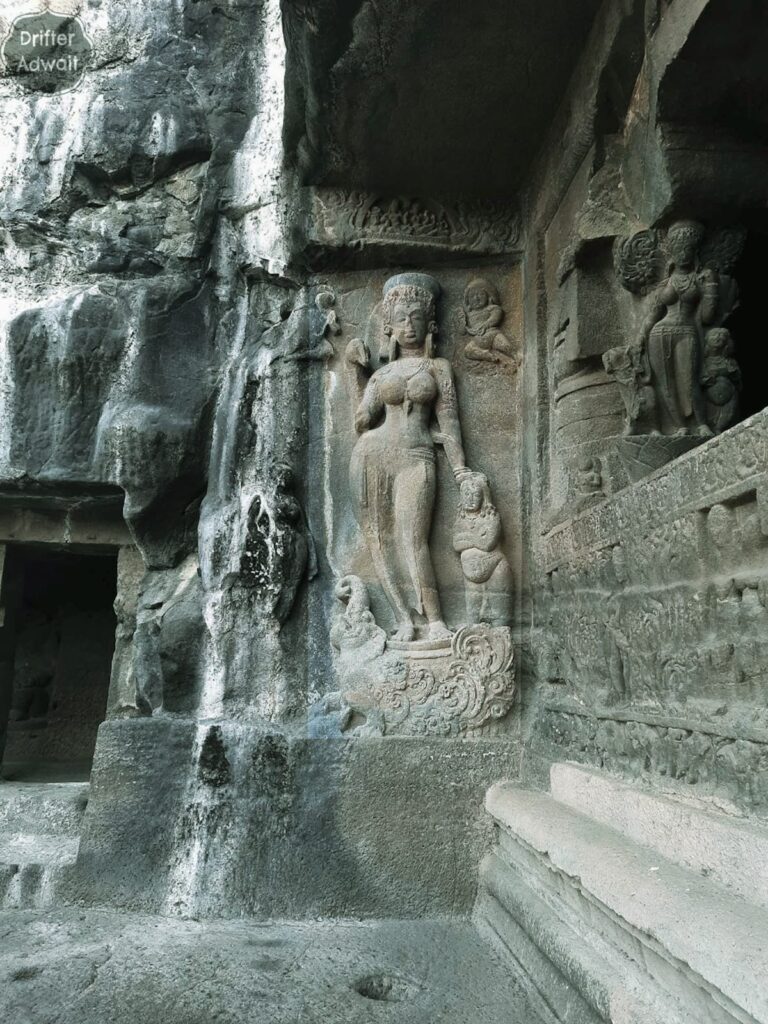
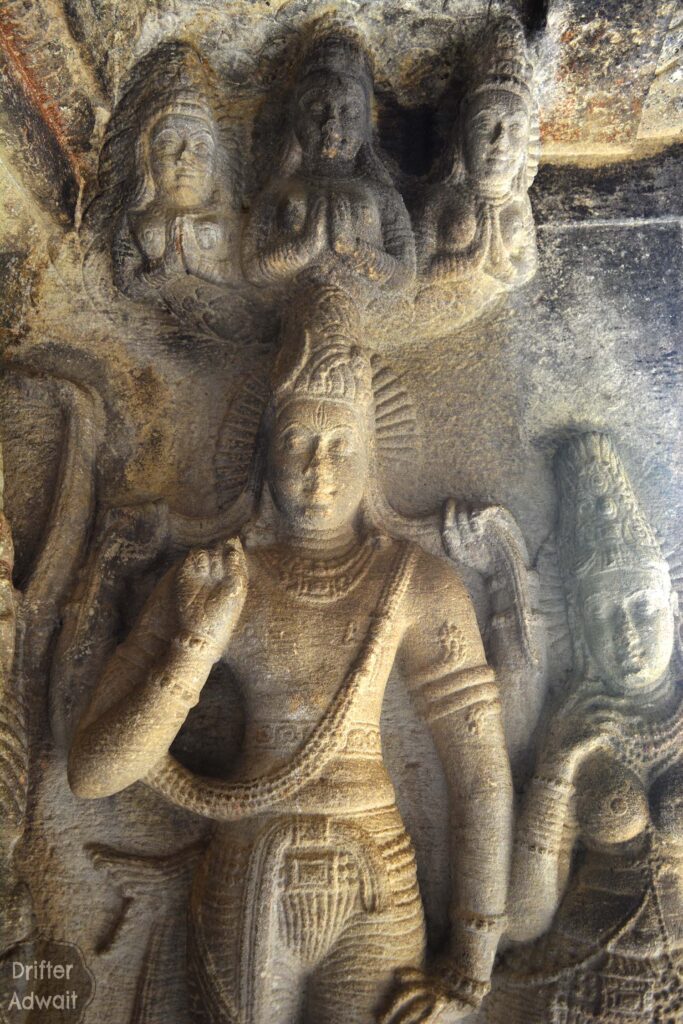
Resources:
1. Vanaparva, Mahabharat, By Pundit Ramnarayandatta Shastri Pandeya ‘Raam’, Geeta Press, Gorakhpur, Bharat
2. Bala Kanda, Sarga 44, Ramayan, Edited by IIT Kharagpur
